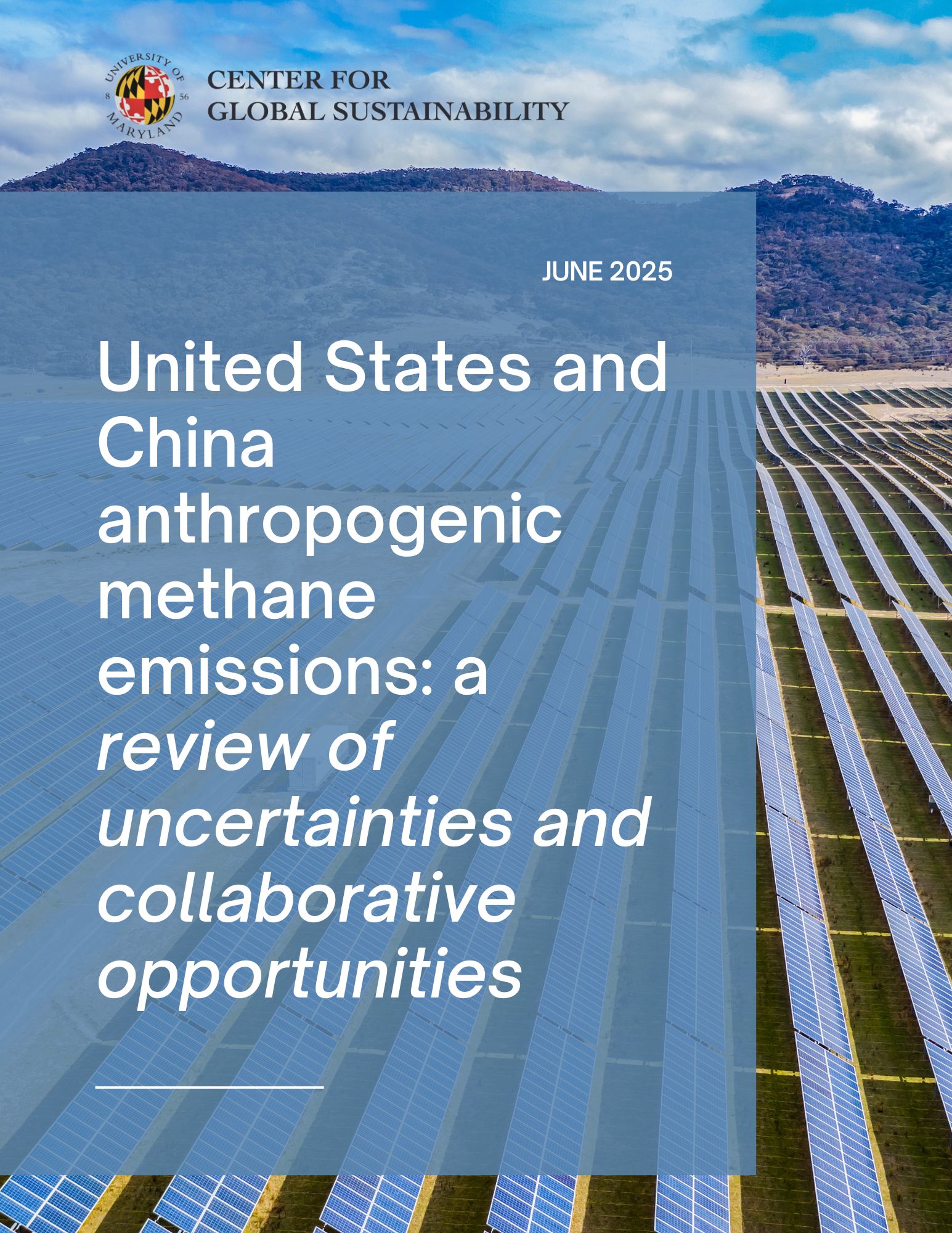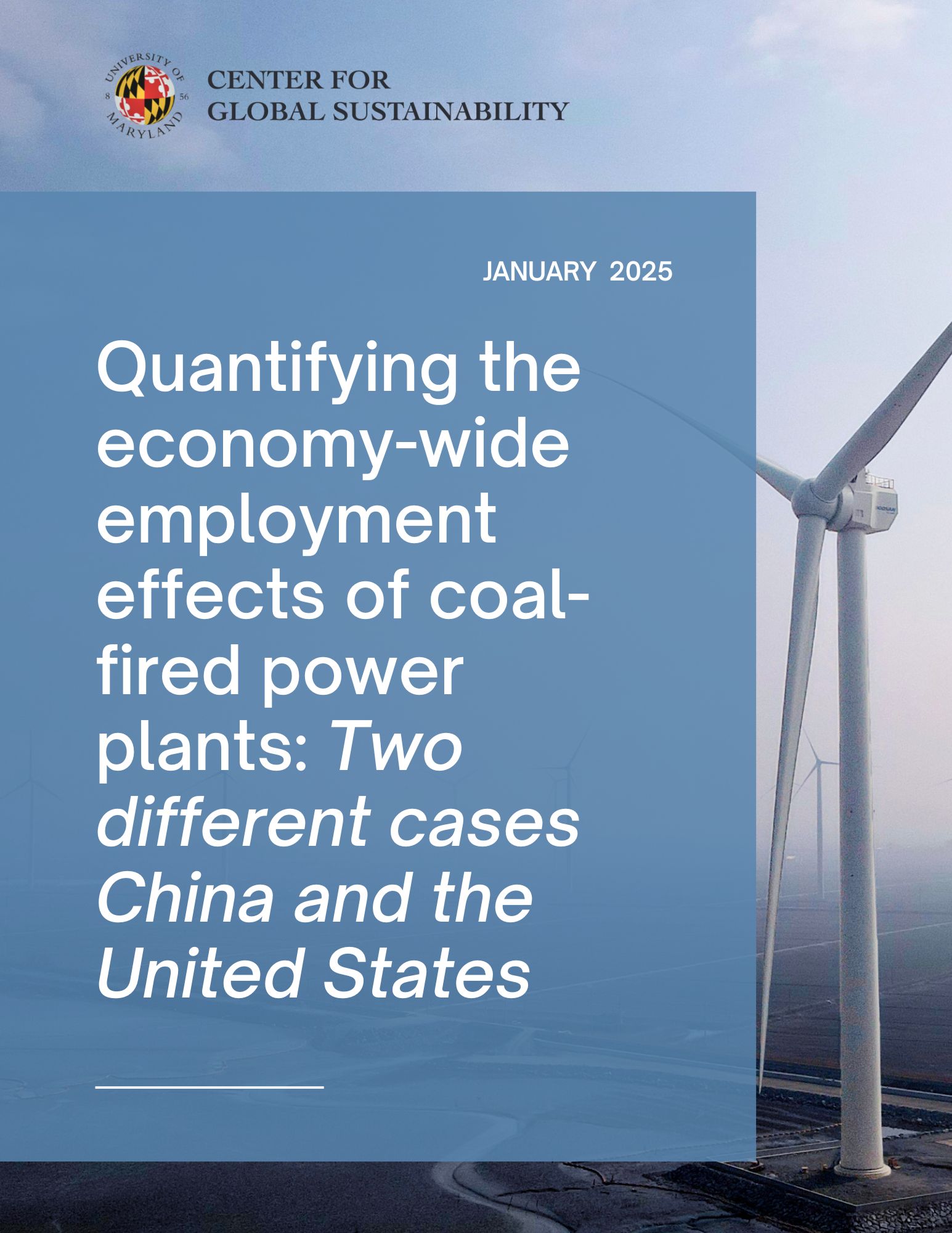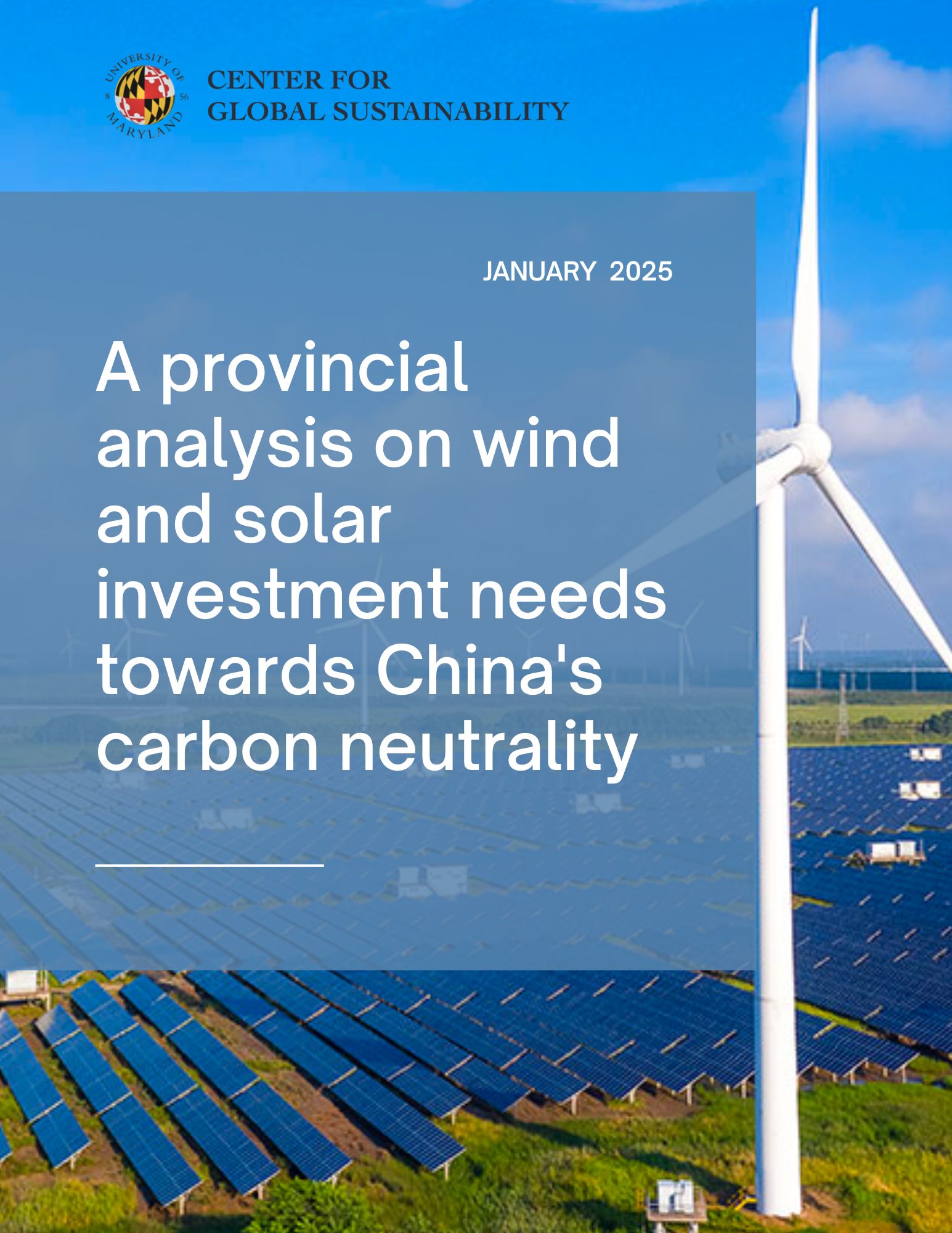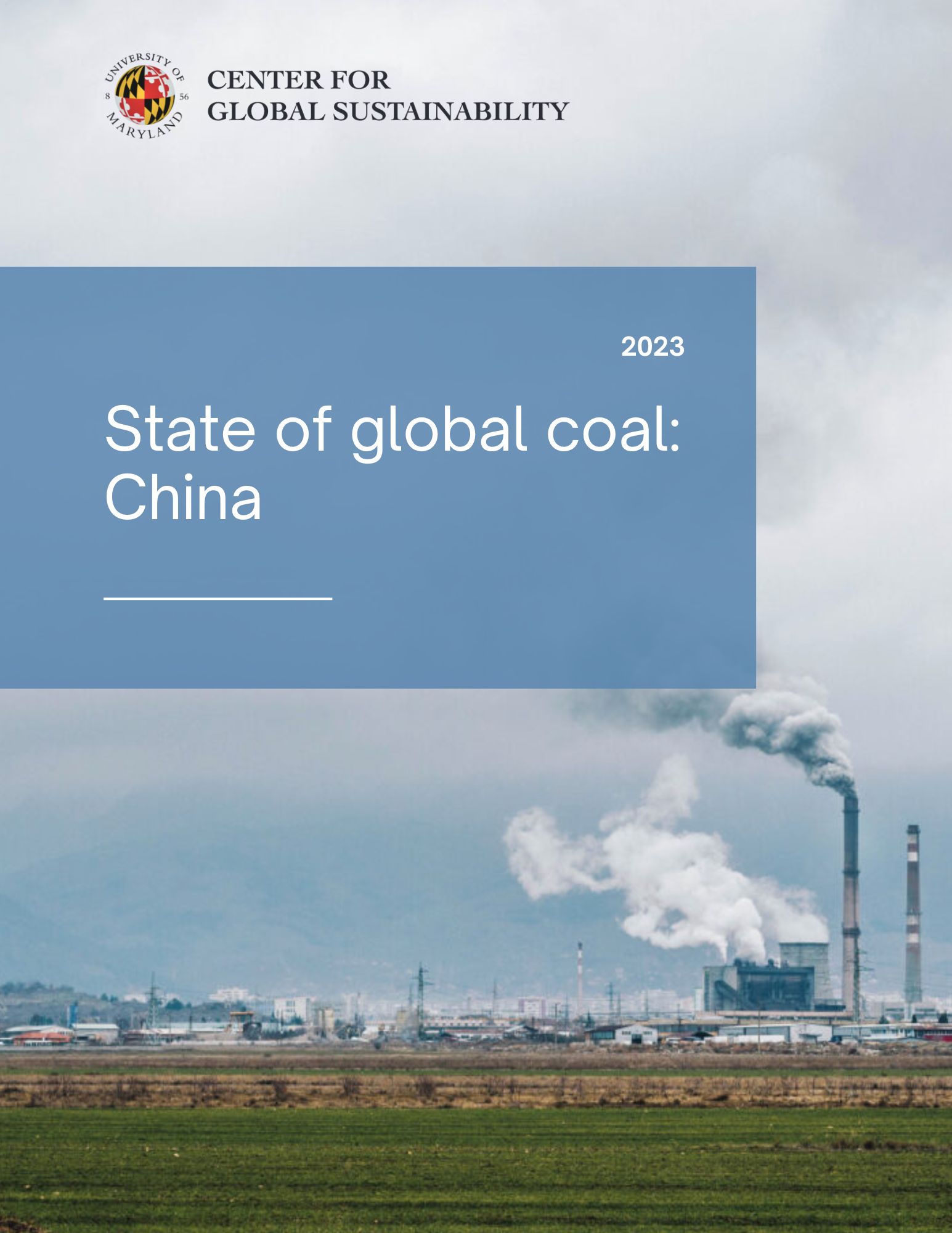Our High Ambition pathway for China shows overall greenhouse gas (GHG) and CO2 emissions peak before 2025 and a 27-31% reduction of total GHG emissions (including Land Use, Land Use Change and Forestry (LULUCF)) by 2035 from 2023 levels. In November 2025, China announced its 2035 NDC targets , including reducing the economy-wide net GHG emissions by 7-10% from the peak level; increasing non-fossil share of primary energy consumption to over 30%; installing 3,600 GW of solar and wind capacity; and scaling up the total forest stock volume to over 24 billion cubic meters.1 China has already overachieved the solar and wind 2030 NDC capacity target with a total 1,673 GW installed capacity by the first half of 2025,2 and is on track to surpass the remaining 2030 NDC targets. Latest data and trends suggest that China has entered the emissions peaking stage. A delay in the peak year to 2030 (as previously committed) at a higher level will also imply higher emissions for 2035, due to uncertainty of the target base year.
China’s overall emissions are dominated by electricity CO2 and industry CO2. Electricity generation accounts for nearly a quarter of the total GHG emissions in 2022 and will likely drive China’s overall emissions in the coming decade. Industry emissions contribute to over 20% of the total GHG emissions and are already on a declining trend due to economic structural change. To achieve the High Ambition 2035 target, key mitigation measures include: maintaining high-speed wind and solar deployment and integration in electricity; stopping new coal construction and deploying alternative grid balancing strategies; promoting economic restructuring away from energy-intensive, infrastructure-driven growth; accelerating electrification and energy efficiency in end uses; and maximizing low-cost non-CO2 mitigation.
2035 Target: Total GHG Emissions Reductions
via CGS High Ambition Pathways
-27 to -31%
Relative to Estimated Peak Year
2023ᵇ
Official 2035 NDC target
-7% to -10%ᵉ
Official 2030 NDC target
-65%ᶜ
Net zero target
2060
Our High Ambition pathway for China shows a 27-31% reduction in total GHG emissions (including LULUCF) by 2035 from 2023 (Figure 1). Under the High Ambition scenario, GHG emissions in China are projected to peak before 2025, and decline more rapidly after 2030 until 2050. After 2050, the reduction trend slows down for the remaining hard-to-abate residual emissions until reaching net zero by 2060. Under the Current Policies scenario, total GHG emissions are reduced by 6-14% by 2035 from the peak in 2025. In comparison, our estimates show that China’s 2035 NDC with a 7-10% reduction from the peak level may imply a 3-10% reduction from 2023 (Figure 1), across a small range of potential peak levels—from a 2024 peak (a 0.4% increase from 2023 levels)6 on the lower end of peaking to a 2025 or 2026 peak (a 3% increase from 2023) on the upper end.
China’s total GHG emissions increased by 79% from 2005 to 2023 but may have reached a turning point.3 By 2025 Q1, China’s CO2 emissions dropped by 1.6% on a year-on-year basis and by 1% in the latest 12 months, largely driven by decreasing emissions from the power sector CO2.7 China’s 2025 carbon intensity target under the 14th Five-Year Plan (FYP) aims to reduce CO2 emissions per unit of GDP 18% from the 2020 level, which, according to our analysis, requires emissions to decline by 3-6% from 2023 based on national inventory, in line with other analyses.8 In comparison, the 2030 NDC carbon intensity target, which aims to reduce 2005 carbon intensity by over 65% by 2030, involves larger uncertainty. Across a range of annual GDP growth rates (3.59-5.4%10) from 2024, meeting the 2030 carbon intensity target may lead to a 4% reduction to a 9% increase in total energy CO₂ from 2023 levels, based on national inventory, while a 8-19% decline from 2023 is needed based on global inventory.
Coal contributed 58% of total electricity generation in 20244 while renewables contributed 34%, of which solar and wind contributed over half (18%) (Figure 2). The share of coal in total generation has been declining since 2011 (from 78% to 58%). The power sector accounts for the largest difference in emissions reductions between the Current Policies and High Ambition scenarios, mainly driven by different assumptions about wind and solar deployment.
Under the High Ambition scenario, China’s renewable share of power generation is 71% by 2035, with accelerated solar and wind buildout, and reduced coal and gas generation by 2035. Specifically, power sector transitions under the High Ambition pathway include:
- Increasing the share of solar and wind from 18% in 2024 to 41% by 2030 and 58% by 2035, with an average buildout of 311 GW/year from 2025 to 2030, and 305 GW/year from 2030 to 2035, leading to a total of over 4,722 GW solar and wind capacity by 2035
- Decreasing coal generation by 18% by 2030 and 48% by 2035 from 2024 levels.
- Reducing gas generation over 50% by 2035 from 2024 levels.
Under the Current Policies scenario, solar and wind account for 49% of power generation by 2035 with an average buildout of 242 GW/year, resulting in a slower phase down of coal generation, which declines by 21% by 2035 from 2024 levels. In comparison, the 2035 target of 3,600 GW solar and wind capacity indicates an average buildout of about 200 GW/year, a large slowdown from the recent trend.
China has relied on fossil fuel imports since 2000 to support rapidly growing domestic demand across sectors.12 By 2024, China’s coal production has surpassed the domestic demand. Meanwhile, the imports of oil and gas accounts for 43% and 71% of the domestic demand respectively (Figure 3). The expansion of renewables, with improved energy efficiency, can help reduce China’s reliance on imported fossil fuels.13 Under our High Ambition pathway for China, domestic coal demand declines by 7% by 2030 and 33% by 2035 from the 2024 level, while gas demand falls by 24% and 7%, and oil demand decreases by 8% and 14%, respectively (Figure 3). Under our High Ambition pathway, using China’s average efficiency accounting approach, the non-fossil share of primary energy consumption increases to 48% by 2035, strongly exceeding the 30% target from the 2035 NDC.
Citations
- People’s Republic of China (PRC). China’s 2035 National Determined Contributions. (2025).
- National Energy Administration. Transcript of the National Energy Administration’s 2025 Third Quarter Press Conference. National Energy Administration
https://www.nea.gov.cn/20250731/83ffa46373ec42dd99e0e3271028c151/c.html (2025). - Gütschow, J. & Pflüger, M. The PRIMAP-Hist National Historical Emissions Time Series (1750-2022) v2.5. Zenodo
https://doi.org/10.5281/zenodo.10006301 (2023). - Ember. Electricity Data Explorer - Open Source Global Electricity Data. Ember (2025).
- Hoesly, R. et al. CEDS v_2025_03_18 Gridded Data 0.5 degree. Zenodo (2025).
- IEA & IEA. Global Energy Review - CO2 Emissions Analysis. International Energy Agency (IEA)
https://www.iea.org/reports/global-energy-review-2025/co2-emissions (2025). - Myllyvirta, L. Clean energy just put China’s CO2 emissions into reverse for the first time. Carbon Brief
https://www.carbonbrief.org/analysis-clean-energy-just-put-chinas-co2-emissions-into-reverse-for-first-time/ (2025). - Myllyvirta, L. Analysis: Record drop in China’s CO2 emissions needed to meet 2025 target. Carbon Brief
https://www.carbonbrief.org/analysis-record-drop-in-chinas-co2-emissions-needed-to-meet-2025-target/ (2024). - Riahi, K. et al. The Shared Socioeconomic Pathways and their energy, land use, and greenhouse gas emissions implications: An overview. Global Environmental Change 42, 153–168 (2017).
- IMF. People’s Republic of China and the IMF. International Monetary Fund (IMF)
https://www.imf.org/en/Countries/CHN (2024). - KPMG & Kearney. Statistical Review of World Energy, 73rd Edition. Energy Insitute
https://www.energyinst.org/statistical-review/resources-and-data-downloads (2024). - IEA. China - Countries & Regions. International Energy Agency (IEA)
https://www.iea.org/countries/china/energy-mix (2025). - Sun, Y.-F., Yu, S., Zhang, Y.-J. & Su, B. How do imports change the energy consumption of China? An analysis of its role in intermediate inputs and final demands. Energy 270, 126947 (2023).
Our Work








